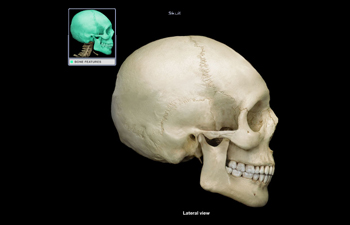
SXU Professor Introduces Virtual Human Anatomy Lab

When the spring semester shifted to remote learning as a response to COVID-19, Saint Xavier University (SXU) biology professor Stacie Raymond, D.C., wanted to find a way to engage students in her human anatomy courses. Through her research, she introduced an innovative virtual lab that is an interactive, dynamic and supportive high-impact learning experience.
The pandemic's disruption has caused U.S. colleges and universities across the nation to rethink and modify how to engage students in coursework outside the normal classroom setting. Raymond's new online program addresses that in a means to bring essential material to students through virtual education.
The virtual anatomy lab will be part Raymond's fall 2020 semester human anatomy courses. The lab is an online program that comes with the purchase of a McGraw Hill e-book, which eliminates the need for an additional costly book. Raymond first started implementing online materials into her human anatomy courses as an additional tool for lecture, but as the resources grew through the years, she was able to expand on it to make it a truly stimulating experience for a remote setting.
Through the program, students have online access to a "real" human cadaver to learn the anatomical structures of the human body. The program is comprised of different modules for every human organ system, and each structure can be dissected, rotated and animated in 3D to give students a better understanding of how the human body functions.
Within the modules, students have access to videos that explain topics such as how bones form, how arthritis affects joints, how blood flows through the different organs of the body and more. There is also a virtual microscope which shows microscopic images of structures and a radiological feature that shows the human body through X-rays and CT, MRI and PET scans.
"I love the ability to bring in the clinical aspect of the field to students," said Raymond. "There's also a built-in quiz feature to help students study and gauge their progress."
Designed to enhance student learning, the virtual labs are beneficial for a variety of reasons. The lab is available for students to access at all times, which isn't possible in a regular lab classroom. They allow students to dissect and view the human body without exposure to chemicals in a lab and without the potential for injury. "It's clean, virtual and modern," said Raymond. "In a way, it's better than a regular lab because in a regular lab, we use plastic models to learn parts of the human body. Students are still learning all of those same parts, but now they all have access to any part of the body at any time. There's no sharing an arm or leg model."
Through the lab, Raymond's goal is for students to learn the human body inside and out. With most of her students going into health fields like nursing, medicine, physical therapy, chiropractic care and more, it's critical that they learn anatomy. "Human anatomy will be their base for all future courses, and if they have a solid foundation in human anatomy, they will be able to succeed in future courses," said Raymond.
"Human anatomy is constantly evolving, and here at Saint Xavier, I strive to be on the cutting-edge of any new technology. As a physician myself, I know how important it is to learn these structures. To be able to bring real-world experience to my students is priceless."

